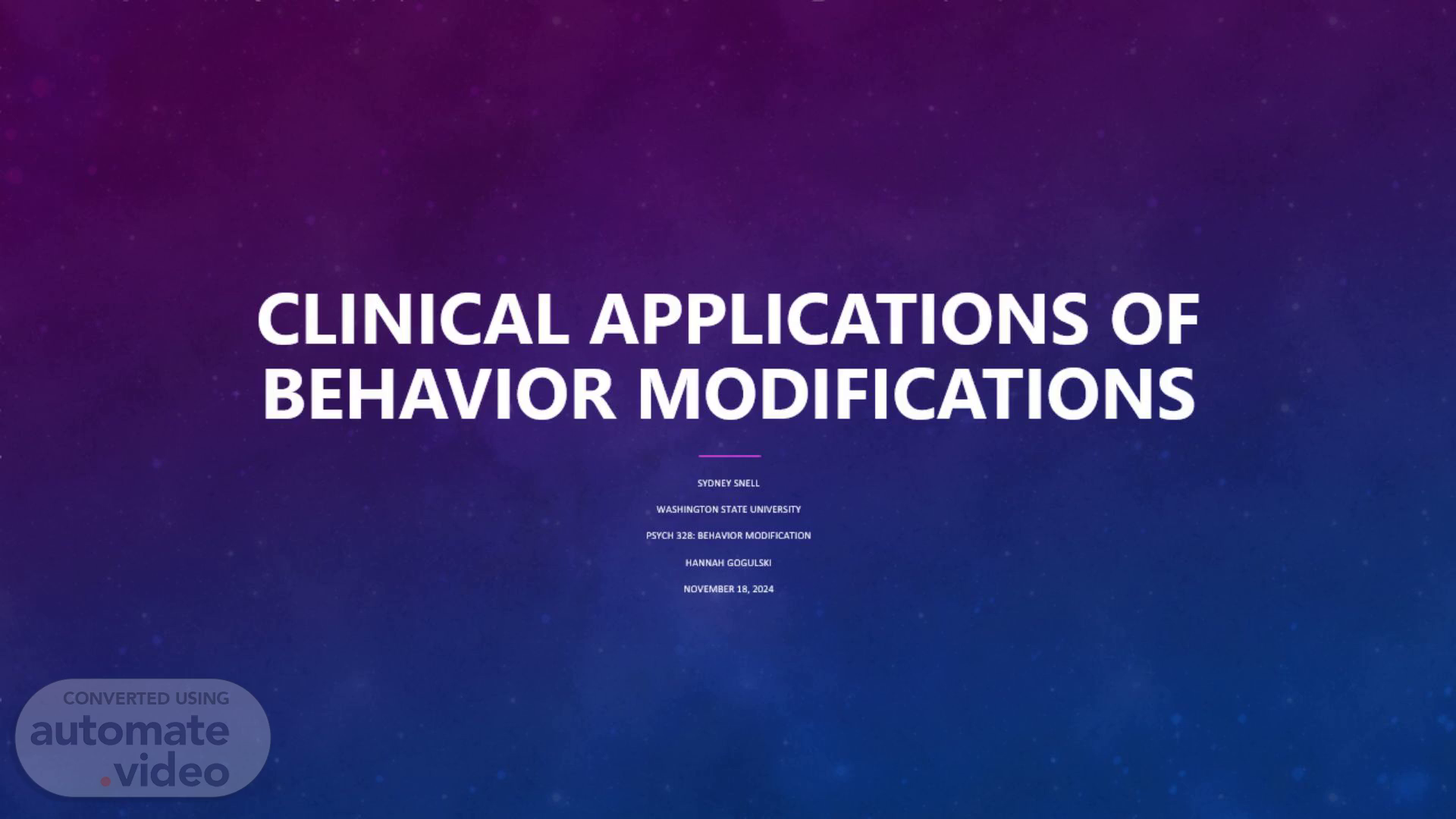Scene 1 (0s)
[Audio] Clinical Applications of behavior modifications by Sydney Snell, Washington state university psyh 328.
Scene 2 (9s)
[Audio] The clinical application technique I was assigned for this project was eye movement desensitization and reprocessing also known as EMDR for treatment of Post Traumatic Stress Disorder also known as PTSD.
Scene 3 (25s)
[Audio] A quick definition of post traumatic stress disorder is a disorder that one develops when a person has experienced a traumatic event. This can make one feel anxious, stressed, have nightmares, etc even after the event is no longer taking place.
Scene 4 (46s)
[Audio] EMDR is a structured therapy that encourages the patient to briefly focus on the trauma memory while simultaneously experiencing bilateral stimulation (typically eye movements), which is associated with a reduction in the vividness and emotion associated with the trauma memories.
Scene 5 (1m 8s)
[Audio] The article I decided to use was completed in Clarksville Tennessee, it was 5 days long and the client received edmr therapy two times per day. The sessions were focused on ten target events from the patients experiences in combat and one childhood experience. Results for this client was mainly focused about their seventh session..
Scene 6 (1m 29s)
[Audio] I have presented some simple background information on the client, such as his name, age, occupation history, and a couple random facts that were also included in the article about him..
Scene 7 (1m 41s)
[Audio] The method that the therapist used for this technique was the eight phase approach, scales, hand movements, and breathing techniques. The eight phases included history taking phase includes a full history and assessment, in this step the patient and therapist identify targets, triggers, and goals. Preparation is the second step where the therapist explains treatments and they practice components such as eye movements; and arranging a safe place exercise if it would ever be needed. The third step is the assessment, this is when they asses the memory that will be focused on in that session. The 4th step is desensitization where the client focuses on the memory while engaging with eye movements. Installation is next, which is where positive cognition comes into play to attempt to change the outlook of the event. Body scan is started for clients to observe their physical responses remembering this event but with now the positive outlook to follow. Closure is to end the session with hopes the memory is fully processed. Lastly the therapist will re-evaluate to measure effectiveness. SUD and VOC scales are also used in the treatment phase and as needed to measure effectiveness..
Scene 8 (2m 53s)
[Audio] The results of the ten session for mike were that he felt refreshed and that he had a different outlook on the situations that were addressed. He did not report continuing symptoms of PTSD and the therapist was able to follow him for 18 months before he relocated, and he also did not report any worsening symptoms..
Scene 9 (3m 13s)
[Audio] Here is my reference page, thank you for taking the time to watch my video..
